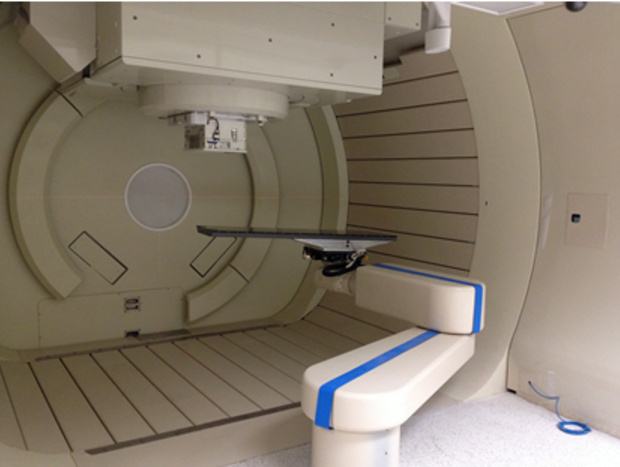The reporter learned from the Hefei Comprehensive National Science Center that the Hefei Ion Medical Center under the center has recently achieved key technological breakthroughs. The three components of the core equipment “Hefei Superconducting Proton Cyclotron Treatment System†have successfully achieved full coverage of domestic integration and will accelerate. The localization process of cancer precision treatment equipment . It is understood that Hefei superconducting proton cyclotron treatment system has three core components: "RF cavity system", "degrader system" and "superconducting magnet". On April 8 this year, the cyclotron RF cavity developed by them successfully completed the cold cavity test, and all the indicators met the design requirements. On April 22nd, the domestically produced graphite energy reducer system developed by them successfully completed the 70MeV-230MeV proton belt test at the Scherr Paul National Laboratory (PSI) in Switzerland. The experimental results were highly evaluated by experts. On May 4th, the superconducting magnet's low-temperature electrical performance test was successful, achieving a maximum magnetic field of 4.5 T. The superconducting magnet's high-precision current and magnetic field were stably operated for more than 8 hours, meeting the preliminary test requirements of the medical cyclotron for the performance of the component. "From component design, manufacturing, installation and commissioning to test operation, the three core components have successfully achieved full coverage of domestic integration." Song Yuntao, deputy director of Hefei Ion Medical Center and executive deputy director of the Institute of Plasma, Chinese Academy of Sciences, said that this marks Hefei The superconducting proton project has achieved key technological breakthroughs in the independent research and development and localization of equipment. This is the first time that China will independently develop a superconducting cyclotron. The China Institute of Atomic Energy will launch a prototype of a 230 MeV medical proton cyclotron this year. It is planned to be installed around 2018 and will be “landed†as a demonstration device, and then gradually enter the clinical testing program. Medical proton cyclotrons may be unfamiliar to ordinary people. "Proton knife" is a more vivid name, it is the gospel of many cancer patients. According to Hong Zhihong, deputy director of Chang Gung Memorial Hospital in Linkou, Taiwan, traditional radiotherapy (photon radiotherapy) uses high-energy X-rays (photon rays) produced by linear accelerators to treat cancer. Although it has certain effects, it is a kind of "killing one." The setting of thousand and self-damage is 100. When the normal cells are injured to a certain amount, the tissue function is impaired, and it is easy to accidentally injure the normal tissue near the tumor. It is easy to produce secondary tumors or other lesions after a long period of time. Compared with photon radiation therapy, proton therapy breaks through the traditional radiation therapy X-ray "sandshot", which is a means of treating tumors with protons or heavy ion rays. It is the most internationally recognized and current. Radiation therapy technology. When the proton is accelerated to about 70% of the speed of light by the synchrotron, the ion beam is directed into the human body. Before the radiation reaches the tumor lesion, the energy is released little, and when the lesion reaches the moment, a large amount of energy is released. This energy release, known as the "Prague Peak," achieves "stereotactic blasting" of the tumor. Proton therapy provides new treatment options for cancer patients who cannot undergo surgery. Due to the high efficacy of proton radiotherapy and low side effects, it can avoid the injury of healthy cells during treatment. It is especially suitable for children with cancer, lung cancer, liver cancer and prostate. Cancer, pancreatic cancer, and nasopharyngeal cancer are particularly therapeutic in children's cancer, which can greatly reduce the impact on height, vision, and reproductive system during child growth. Of course, it is not omnipotent: diffuse tumors, or tumors close to the gastrointestinal tract are not suitable for proton therapy. Alarm Burglary Safe,Office Security Burglary Safes,Burglary Safety Box,Burglary Treasury Safes Hebei Yingbo Safe Boxes Co.,Ltd , https://www.yingbosafes.com